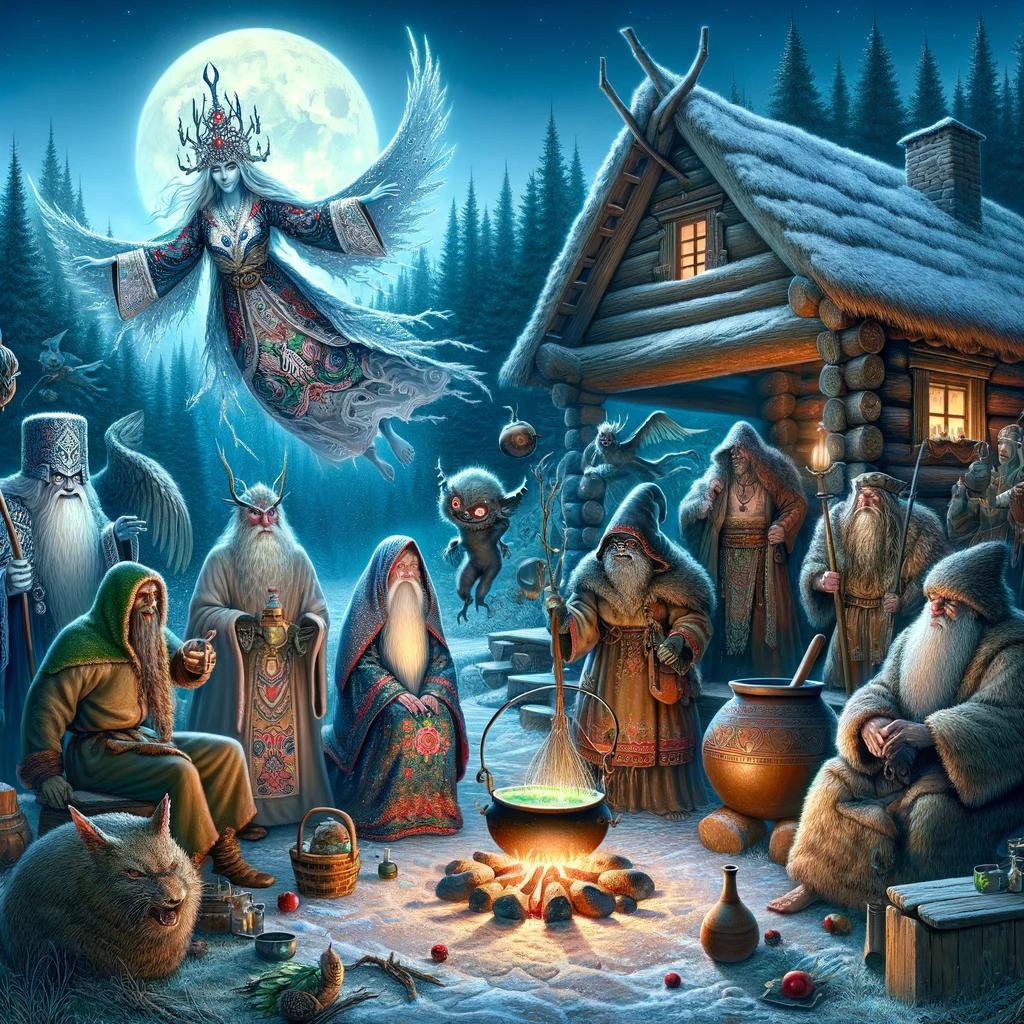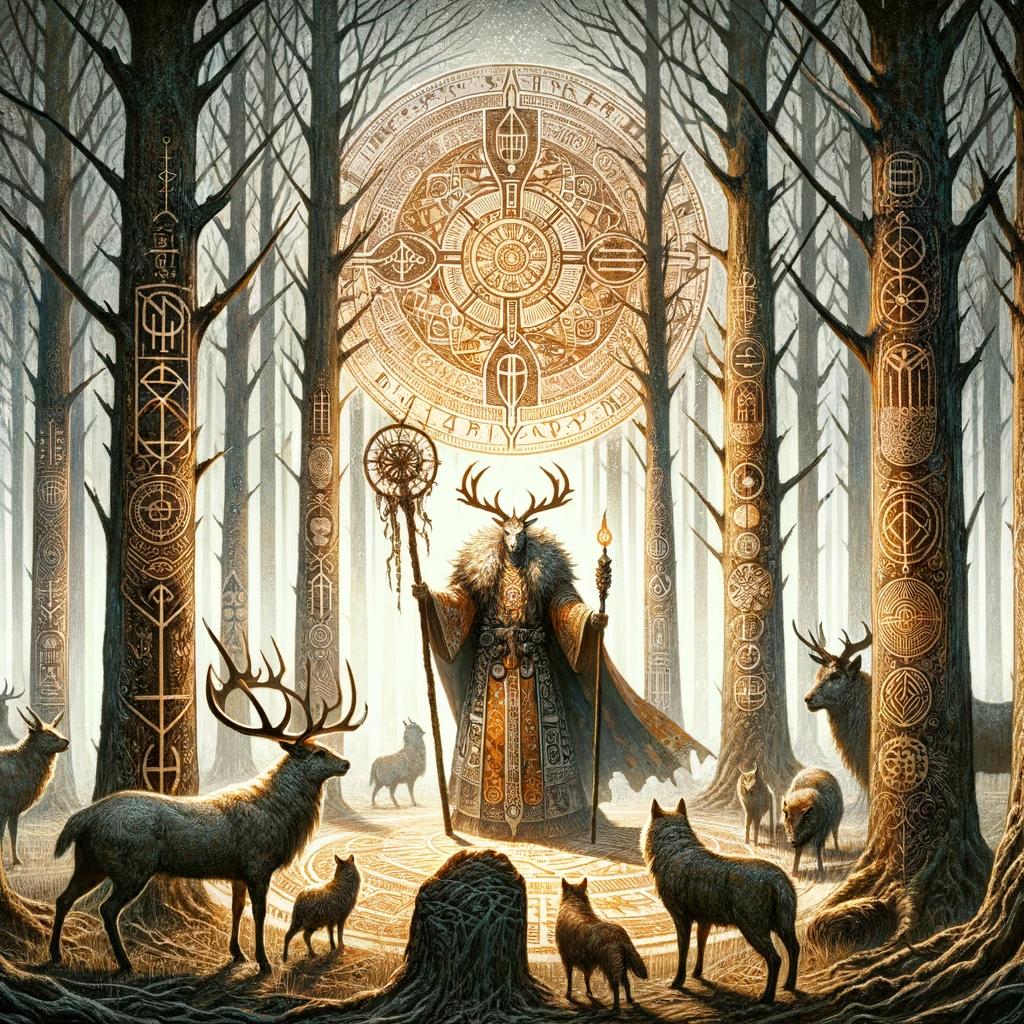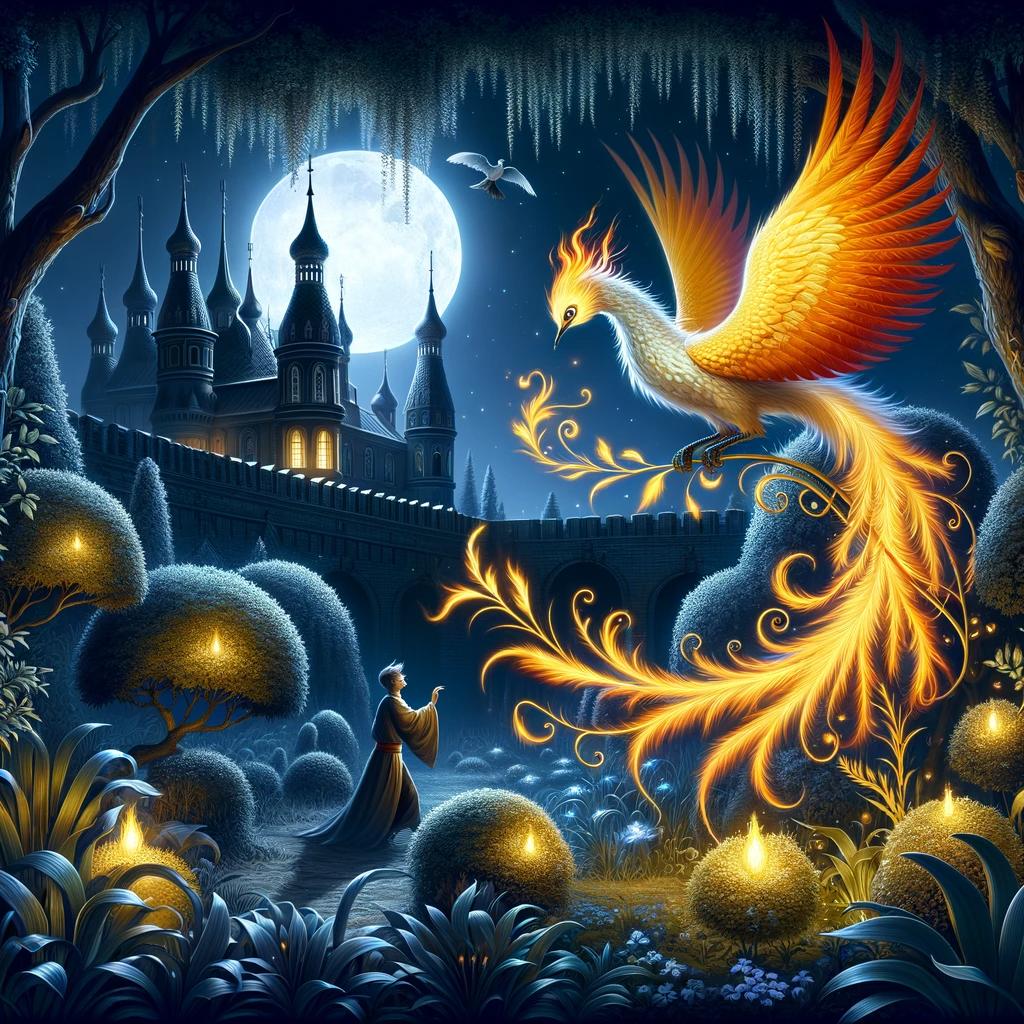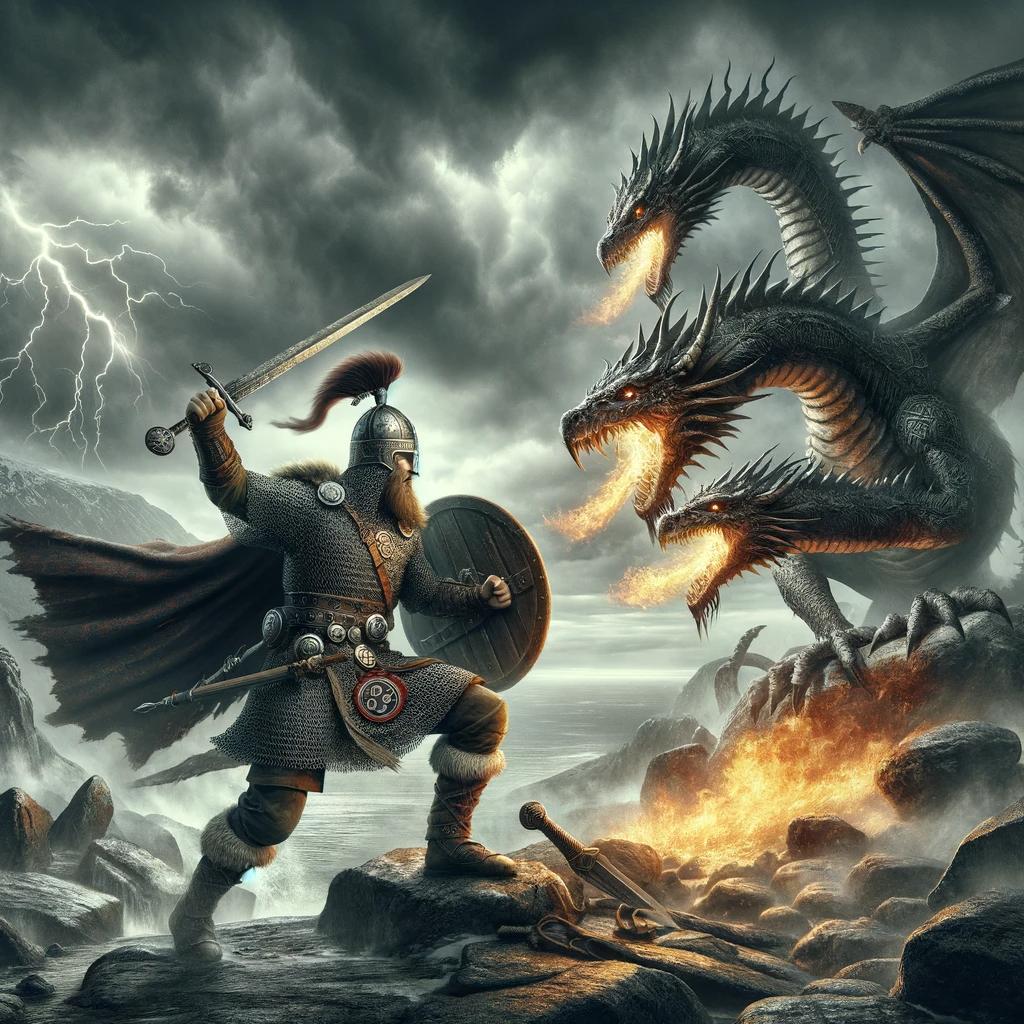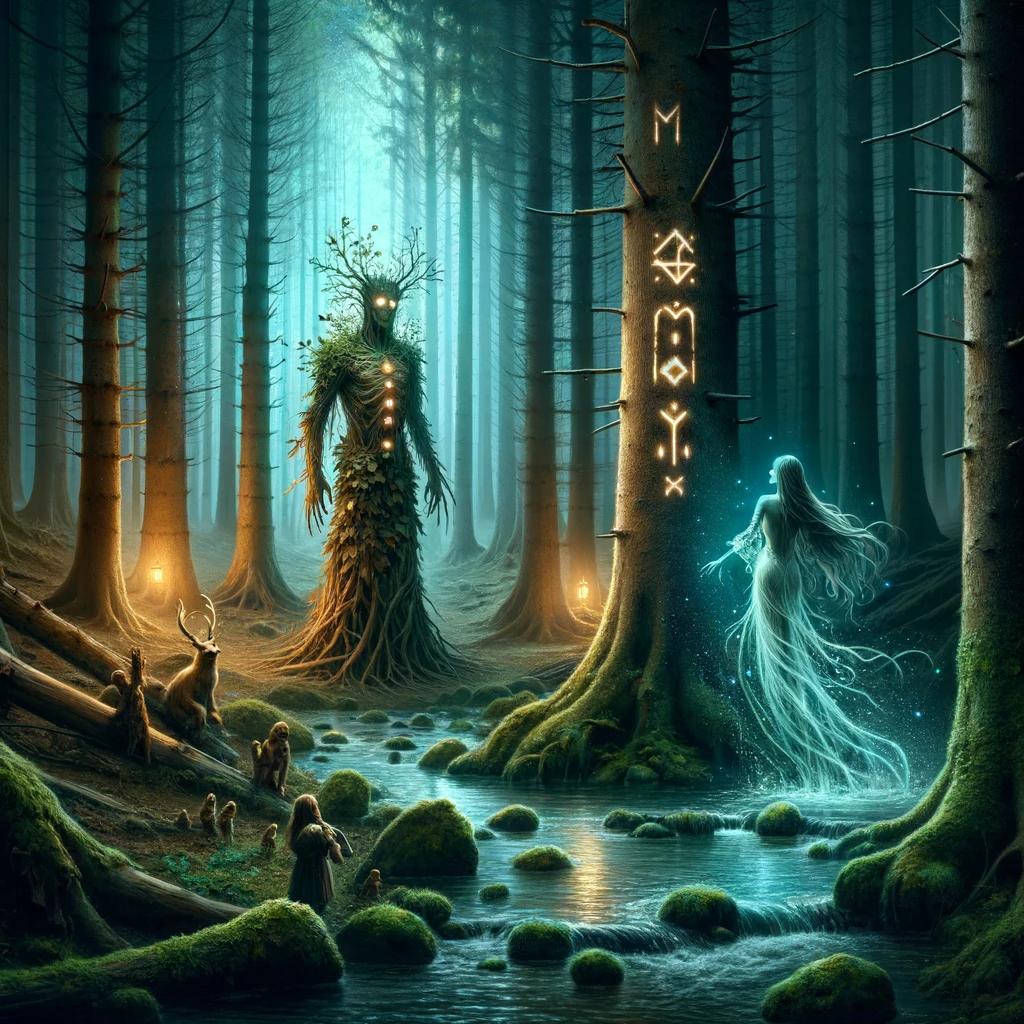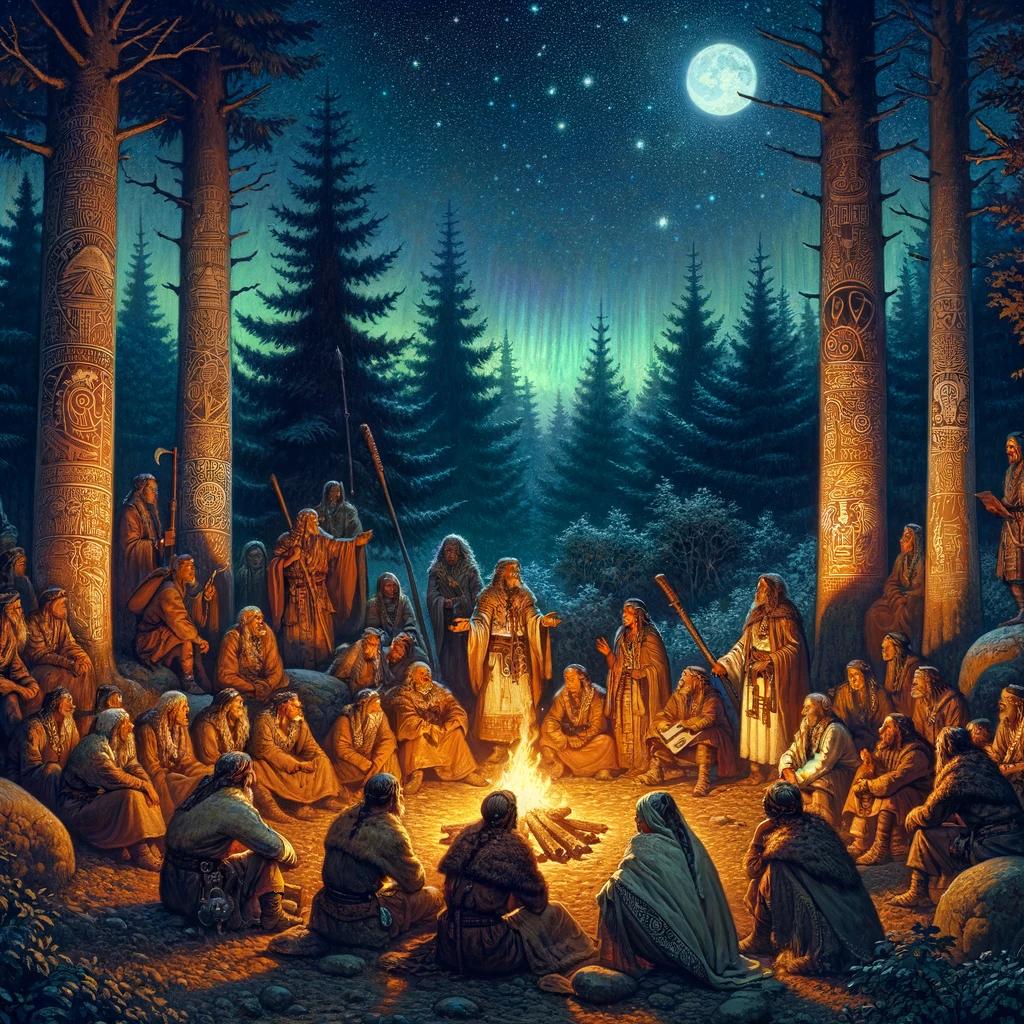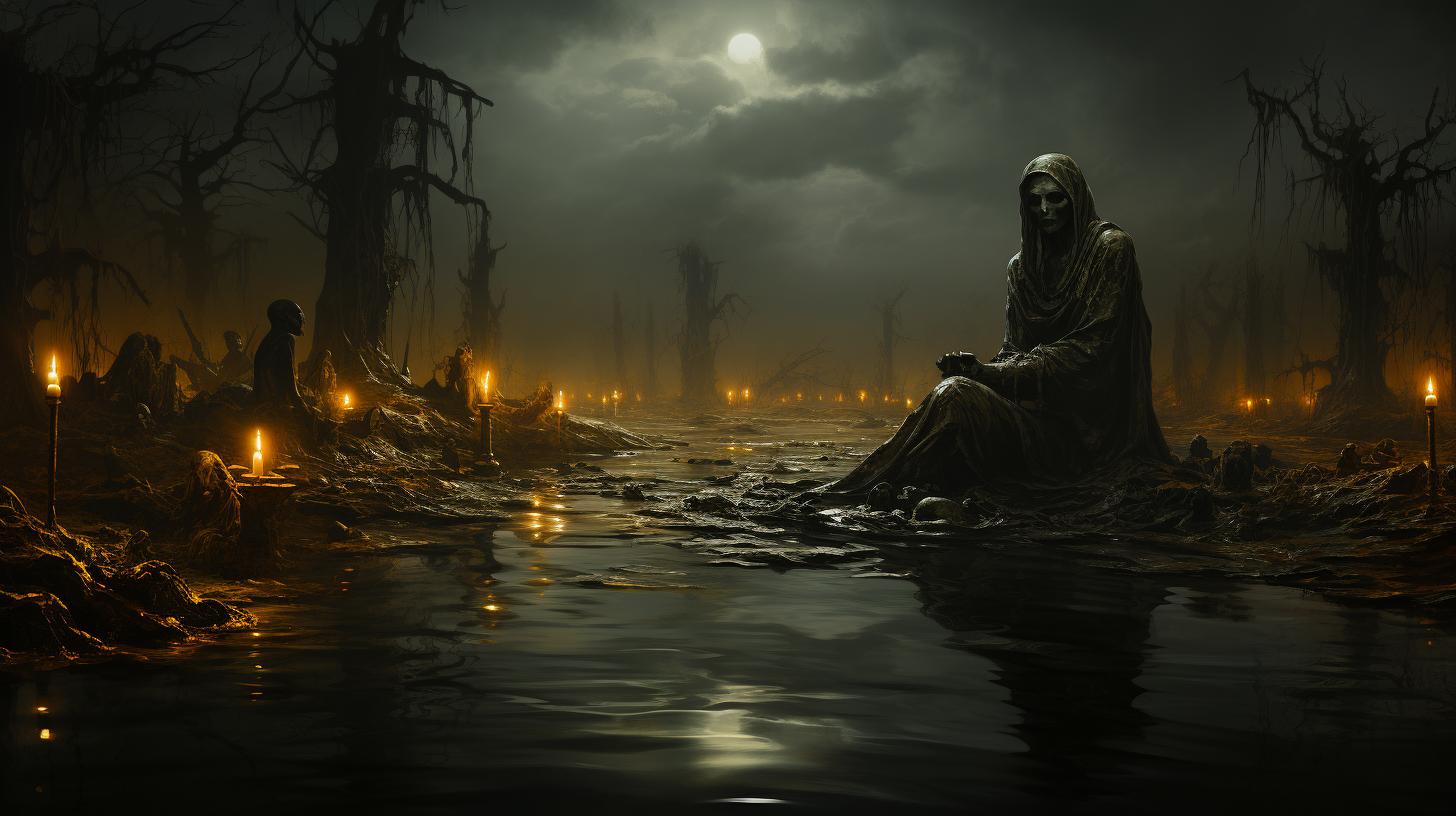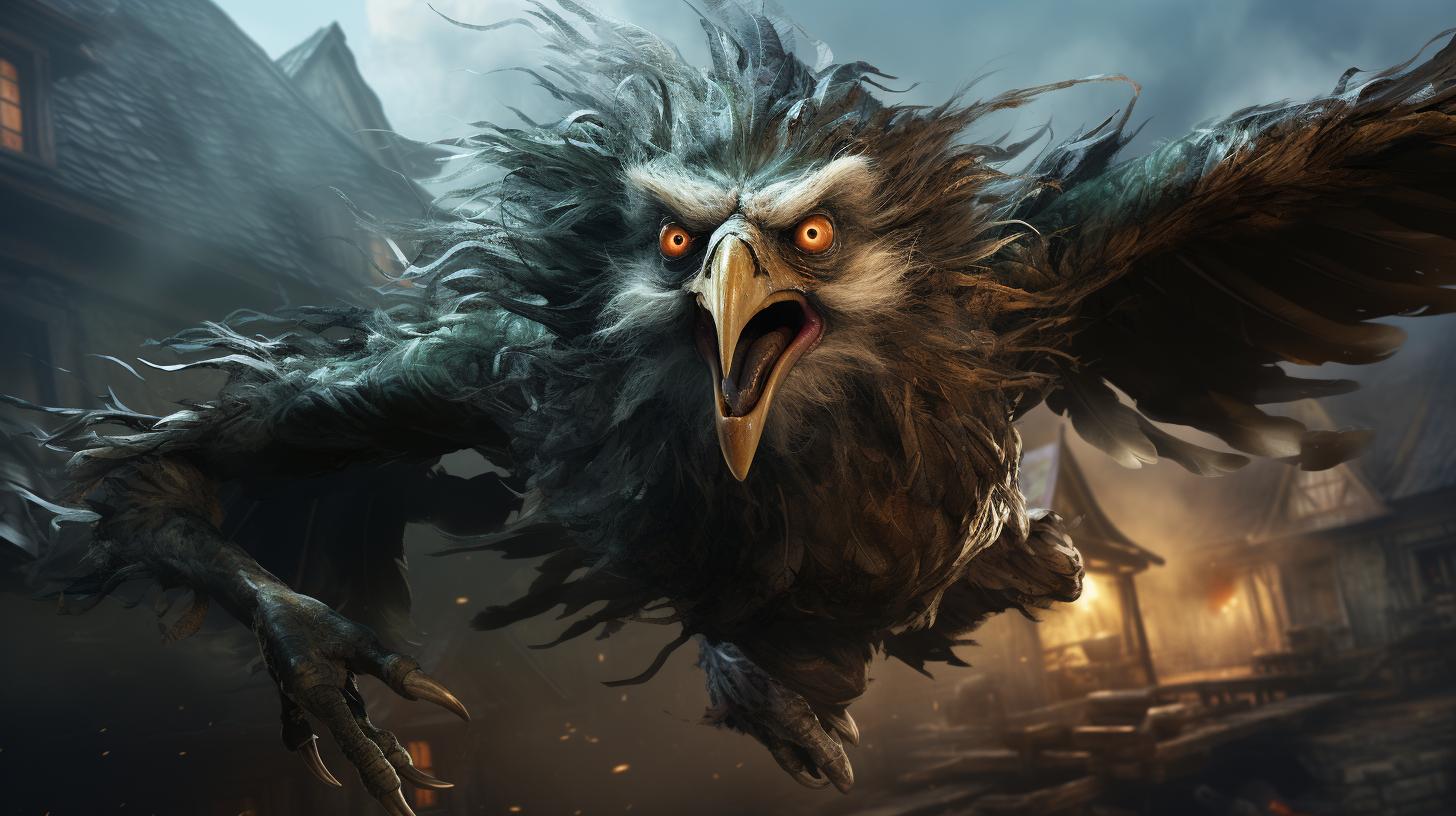Slavic Mythology Characters: Exploring the Divine Beings and Creatures of Slavic Folklore

Slavic Mythology Characters are a captivating part of ancient Slavic beliefs. Before Christian influence, Slavic pagans practiced polytheism and worshiped numerous gods and goddesses. Although scarce written records exist, scholars have identified key deities such as Perun, the god of thunder, and Veles, the chthonic god of waters and the underworld.
Other notable figures include Lada, the goddess of love and beauty, and Mokosh, the goddess of fertility and protector of women. Slavic mythology also encompasses mythical creatures like Baba Yaga, Kikimora, Vila, Triglav, and the phoenix.
Explore these fascinating characters and the rich heritage they represent.
Origins of Slavic Mythology
Slavic Mythology has its roots in the beliefs and practices of the pre-Christian Slavic people. These ancient Slavic tribes held polytheistic beliefs, worshiping numerous gods and goddesses. Their religious practices were deeply intertwined with their daily lives, rituals, and ceremonies.
Pre-Christian Slavic Beliefs and Practices
The pre-Christian Slavic people held a strong connection with nature and believed that natural phenomena were controlled by divine beings. They worshiped gods and goddesses associated with various aspects of life such as fertility, war, agriculture, and love.
These deities were believed to possess the power to bless or curse the people and impact their everyday lives.
Furthermore, the pre-Christian Slavic communities engaged in elaborate rituals and ceremonies to honor these deities.
These rituals often involved offerings, songs, dances, and communal gatherings. The purpose was to establish a connection with the divine and seek their blessings and protection.
Lack of Written Records and Christian Influence
Unfortunately, there is a scarcity of written records directly from the pre-Christian Slavic civilization.
Most of the available information about Slavic mythology comes from later sources, such as chronicles and accounts by Christian missionaries. These sources, however, were influenced by the new Christian beliefs that spread across the Slavic lands.
The arrival of Christianity significantly impacted Slavic mythology and religious practices. As Christian missionaries spread their teachings, the Slavic people gradually converted to Christianity, adopting monotheistic beliefs. This transition led to the suppression and fading away of many traditional Slavic mythological elements.
Additionally, Christian missionaries often neglected or dismissed the spiritual beliefs and practices of Slavic pagans, resulting in a lack of comprehensive documentation on Slavic mythology. As a result, the true depth and intricacies of the pre-Christian Slavic beliefs remain somewhat elusive.
Slavic Deities: Gods and Goddesses
Slavic mythology is rich with a pantheon of gods and goddesses associated with various aspects of life and nature. These deities played significant roles in the belief system of ancient Slavic tribes.
Let’s delve into some of the prominent Slavic deities:
Perun: The God of Thunder and Lightning
Perun, akin to the mighty Zeus or Thor, was revered as the god of thunder and lightning. He symbolized power, strength, and protection. Slavic pagans believed that Perun controlled the forces of nature, reigning over the skies and unleashing thunderstorms to maintain order.
Veles: The Chthonic God of Waters and the Underworld
Veles held an essential role in Slavic mythology as the chthonic god associated with waters, forests, and the underworld. Often depicted as a dragon or a serpent, Veles represented the primal forces of nature and was both feared and respected for his power over the unseen realms.
Lada: The Goddess of Love and Beauty
Lada was a beloved deity worshipped as the goddess of love, beauty, and fertility. She symbolized harmony, desire, and the blossoming of life. As the embodiment of feminine grace and elegance, Lada was revered for her nurturing nature and represented the ideal feminine qualities in Slavic mythology.
Mokosh: The Goddess of Fertility and Protector of Women
Mokosh held a crucial role as the goddess of fertility, earth, and the protector of women. She was associated with weaving, spinning, and the nurturing aspects of nature. Mokosh was sought after for her blessings for childbirth, abundance, and the well-being of women.
Other Mentioned Deities in Slavic Mythology
Besides these major deities, Slavic mythology also includes several other gods and goddesses who played specific roles in the spiritual beliefs of ancient Slavs. While their significance may vary in different regions and cultures, they collectively showcase the diversity and complexity of Slavic mythology.
- Radegast: The god of hospitality, fertility, and war.
- Chernobog: The dark god associated with the night, darkness, and chaos.
- Svarog: The supreme god of celestial fire, craftsmanship, and creativity.
- Dazbog: The god of the Sun, fertility, and abundance.
- Marzanna: The goddess of winter, death, and rebirth.
These deities and their unique characteristics contribute to the tapestry of Slavic mythological beliefs, reflecting the ancient Slavic people’s connections with natural forces, spirituality, and the cycles of life.
Russian Gods and Goddesses in Slavic Mythology
In Slavic mythology, Russian deities hold a significant place. They embody various aspects of nature, human existence, and spiritual beliefs. Let’s delve into an overview of Russian gods and goddesses, explore the roles of Perun and Veles in Russian mythology, and discover the unique divinities and their significance.
Overview of Russian Deities
Russian mythology is rich in a diverse range of deities that governed different aspects of life. These deities were revered and worshipped by ancient Slavic people in what is now Russia.
Each deity represented a specific domain, such as nature, fertility, war, or craftsmanship.
Perun and Veles in Russian Mythology
Perun, often referred to as the chief god, was associated with thunder, lightning, and the sky. He symbolized power, strength, and protection. Veles, on the other hand, was the chthonic god connected to the underworld, waters, and the earth.
The mythological dynamic between Perun and Veles represented a cosmic struggle between order and chaos.
Unique Russian Divinities and Their Roles
Aside from Perun and Veles, Russian mythology features a host of other divine beings with unique roles. Some notable examples include:
- Mokosh: Known as a goddess of fertility and protector of women, Mokosh represented the life-giving forces of the earth.
- Lada: Lada was revered as the goddess of love, beauty, and harmony.
She represented feminine grace and charm.
- Stribog: Stribog was the god of the winds, responsible for the changing seasons and the breath of life.
- Chernobog: Chernobog, the counterpart to the benevolent Belobog, represented darkness, strife, and the forces of evil.
Each deity played a crucial role in shaping the belief system and mythology of ancient Russian culture, offering insights into the people’s values, aspirations, and understanding of the world around them.
Exploring Russian gods and goddesses in Slavic mythology provides a fascinating glimpse into the spiritual and mythological traditions that shaped the cultural fabric of ancient Russia.
Different Categories of Slavic Mythology Characters
Slavic mythology is diverse and fascinating, encompassing various categories of deities based on geographic regions.
Let’s explore the different categories of Slavic mythology characters:
Western Slavic Deities
In Western Slavic mythology, we encounter deities associated with the Slavic tribes of today’s Poland, Czech Republic, and Slovakia. These deities include:
- Swantewit: The god of war, fertility, and harvest, often depicted with four heads.
- Radegast: The god of hospitality, fertility, and harvest, revered by the West Slavs.
Eastern Slavic Deities
Eastern Slavic mythology refers to the beliefs of the Slavic tribes in present-day Russia and Ukraine.
Some prominent Eastern Slavic deities include:
- Svarog: The supreme god, associated with the sky, fire, and blacksmithing.
- Khors: The god of the Sun and light, often portrayed as a radiant warrior riding a celestial horse.
- Mokosh: The goddess of fertility, women, and Earth.
Southern Slavic Deities
This category encompasses the deities worshipped by the South Slavic tribes, including those from modern Slovenia, Croatia, Serbia, and Bosnia.
Notable Southern Slavic deities include:
- Perun: The god of thunder and the highest-ranking deity among the Southern Slavs.
- Veles: The god of the underworld, earth, waters, and magic.
- Morena: The goddess of winter, death, and rebirth.
Anonymously Mentioned Deities in Chronicles
Some Slavic chronicles mention deities without providing their exact names or detailed descriptions.
It remains unclear whether these deities were purely mythical or had significant importance in Slavic mythology. Nonetheless, they play a role in shaping the belief system of ancient Slavic tribes.
Explore the wide array of Slavic mythology characters through these different categories, each with their distinct attributes and significance.
Mythical Creatures in Slavic Folklore
Slavic folklore is filled with intriguing mythical creatures that captivate the imagination. These creatures play significant roles in the tales and legends passed down through generations. Let’s explore some of the most notable:
Baba Yaga: The Legendary Witch
Baba Yaga is a prominent figure in Slavic folklore.
She is depicted as a mysterious and powerful witch who resides in a hut that stands on chicken legs. Baba Yaga possesses magical abilities and often tests the courage and wit of those who come seeking her wisdom or assistance.
Her enigmatic nature and unpredictable behavior make her a fascinating character in Slavic mythology.
Kikimora: The Malignant House Spirit
Kikimora is a malevolent spirit associated with domestic spaces, particularly homes. She is believed to be responsible for causing mischief, nightmares, and disturbances within the household. Legends describe Kikimora as a small, female creature with long hair and pale skin, often hiding in attics or dark corners.
Her presence serves as a cautionary tale, reminding people to maintain cleanliness and order in their homes.
Vila: The Demonic Seductress
Vila, also known as Rusalka, is a seductive and alluring creature that appears in various Slavic mythologies. Often depicted as a beautiful young woman with long hair and enchanting eyes, Vila possesses supernatural powers and dwells in forests, lakes, or rivers.
Vila can shape-shift into different animal forms and is known for luring men to their demise. She represents the dangerous allure of the wild and serves as a cautionary figure against succumbing to temptation.
Triglav: The Three-Headed God
Triglav is a unique Slavic deity associated with the realms of heaven, earth, and the underworld. This three-headed god embodies power and control over the three cosmic domains and represents the interconnectedness of these realms.
Triglav’s significance in Slavic mythology highlights the belief in a complex and intricate cosmology among the ancient Slavic people.
Phoenix: The Celestial Spirit
The phoenix is a celestial spirit that possesses immortality through the power of rebirth. In Slavic folklore, the phoenix is associated with the sun and symbolizes hope, renewal, and resilience. Legends describe the phoenix as a magnificent bird with shining feathers that emits brilliant fires as it descends to Earth.
Its symbolism resonates with the belief in cycles of life, death, and regeneration within Slavic mythological traditions.
These mythical creatures are just a glimpse into the fascinating world of Slavic folklore.
Each character carries unique attributes and symbolism, providing insights into the cultural beliefs and values of ancient Slavic civilizations.
Slavic Paganism and its Influence
Slavic paganism played a significant role in the lives of ancient Slavic peoples, shaping their beliefs, rituals, and worldview. This section explores the impact of Slavic paganism and its enduring influence in various aspects of Slavic culture.
The Dualism Debate in Slavic Mythology
One intriguing aspect of Slavic mythology is the ongoing debate surrounding dualism. Scholars continue to analyze the contrasting forces believed to exist within the Slavic pantheon, questioning the interplay between light and dark, good and evil.
This debate adds complexity to the understanding of the multifaceted nature of Slavic deities and their roles in the mythological framework.
Slavic Creation Myth and the Role of Deities
In Slavic mythology, the creation myth holds significant importance. It depicts the origin of the world and the role of deities in its formation. The mythology presents diverse narratives that intertwine gods and goddesses, highlighting their distinct attributes and powers in the process of creation.
Exploring these myths provides insights into the Slavic understanding of the universe and humankind’s place within it.
Symbolism and Rituals in Slavic Paganism
Symbolism played a crucial role in Slavic paganism, serving as a means to express spiritual beliefs and connect with the divine. Rituals constituted an integral part of Slavic religious practices, offering a way to commune with the gods and seek their blessings.
Symbolic representations and rites such as sacred objects, dances, and chants contributed to the rich tapestry of Slavic religious traditions.
Continuity of Slavic Mythology in Modern Practices
Despite the Christianization of Slavic territories, elements of Slavic mythology have endured and continue to resonate in various modern practices. Folk traditions, festivals, and folklore demonstrate the lasting influence of Slavic paganism on cultural expressions.
These remnants serve as a link to the past, allowing contemporary individuals to connect with their ancestral heritage and maintain a sense of cultural identity.
As we delve into the realm of Slavic mythology and its pagan roots, we gain valuable insights into the spiritual and cultural tapestry that shaped ancient Slavic societies.
The exploration of dualism, creation myths, symbolism, and continuity showcases the enduring influence and importance of Slavic paganism in understanding the rich fabric of Slavic culture.
.

